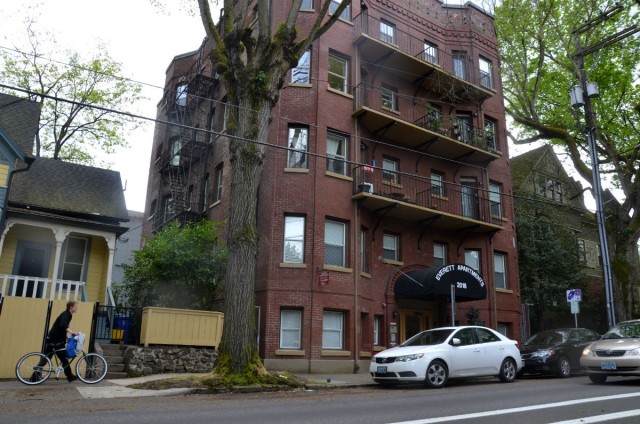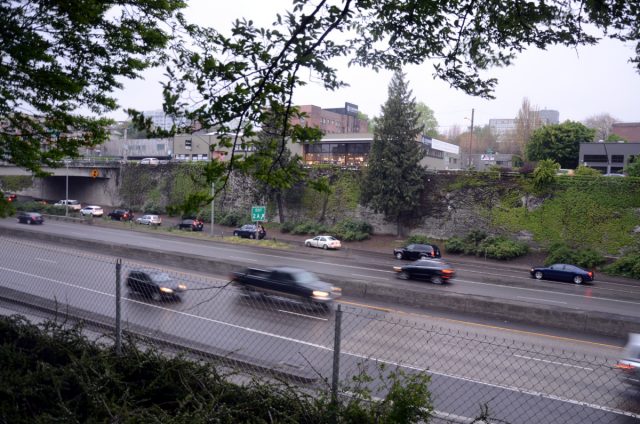Portland’s most underperforming bike quadrant is about to get a very big investment.
Despite their proximity to jobs, northwest Portland residents are significantly less likely to bike-commute than residents of inner southeast, north or northeast Portland. And that’s exactly why Portland’s Biketown system is putting its biggest bet on northwest.
Today’s announcement of a final station map comes on the very same day that a state committee will start debating the fate of the first major bike project for northwest Portland in many years, arguably the key to getting inexperienced bike users comfortably across Interestate 405: the proposed Flanders Crossing bridge.
Northwest Portland is slated to get 12 bike-share stations between NW 25th and Interstate 405, enough to have one within two blocks of almost every resident there. The Pearl District will have eight more, plus two near Union Station and two just south of Burnside.
All in all, the 2.5 square miles of Portland’s bike-share service area that sit west of the Willamette River will have 48 stations — 19 per square mile.
For comparison, here are the citywide average densities in various bike-share systems around the world, compiled last year by NACTO:
Advertisement
Why northwest Portland might be right for bike share, and vice versa

(Photo: M.Andersen/BikePortland)
The people planning Portland’s bike-share system say bike share could create a tipping point in biking for the northwest quadrant.
“Bike share has been really powerful in bringing new people to bicycling, just bringing people who were on the fence to make that jump,” said Steve Hoyt-McBeth, the city’s bike-share manager. “We feel that northwest Portland is really primed to grow in terms of bicycling. We feel that there’s lots of latent demand there.”
“Northwest has a lot of uses within it,” he continued. “It’s close to the Pearl. … We have, for Portland, a lot of medium and high-density housing. … You have all these historic apartment buildings which make riding a private bike kind of a pain because storage is kind of tough.”
Another advantage of northwest: as we wrote during NW Portland Week this spring, it’s got a huge number of low-income housing units, which the city has been working hard to co-locate with bike share stations.
The Metro allocation paying for the city’s contribution to the Biketown system was earmarked, among other purposes, for transportation equity.
Bike share experts: service level in NW will be ‘pretty amazing’

Sean Wiedel, who helps manage Divvy bike share for the City of Chicago and serves on the board of the North American Bike Share Association, said Chicago’s downtown Loop area has “in the range of about 20 stations per square mile.”
For northwest Portland to have comparable station density, Wiedel said, is “pretty amazing.”
“One to two blocks is how far people are willing to walk to get a bike before they start looking for another option.”
— Elliott McFadden, Austin B-Cycle
Elliott McFadden, another NABSA board member who manages Austin B-Cycle, said other cities would envy the sort of station density Portland will be offering on its west side.
“Proximity is key for good ridership,” he said. “Before I worked in bike share, I did some work in the car-share side of things. in car-share folks are willing to work half a mile or more to get a car … With a bike, we found one to two blocks is how far people are willing to walk to get a bike before they start looking for another option.”
McFadden said Portland’s smart-bike system is part of the reason the density is affordable. Because the docks are mostly just pieces of metal instead of complicated electronic and mechanical systems, having many small stations is relatively cheap.
“The smart bikes may allow them to do a lot more of that density that a lot of us would love to do if we could afford to do it,” McFadden said.
State committee is evaluating a crucial bridge project today and tomorrow

(Photos: M. Andersen/BikePortland)
The big risk of the city’s bet on bike sharing in northwest Portland is that Biketown could fall prey to the other major obstacle to biking in the area: the lack of infrastructure.
There is currently no crossing of I-405 that doesn’t essentially require bike users to cross a freeway onramp. Most streets, packed with cars on both sides, require bikes and cars to share space despite high speeds and traffic counts even on the officially designated neighborhood greenways.
The gas tax approved by city voters last month will fund some useful improvements, and others are already in the works. But the biggest prize would be a $5.9 million biking-walking bridge over I-405 at Flanders, and the continuous neighborhood greenway it’d create between the Northwest District and the Steel Bridge.
For the project to win the $2.9 million in state funding requested, the state committee will have to be persuaded that the bridge is of statewide economic significance. One might argue that a low-stress link enabling thousands of car-free trips every day between two rapidly growing job and residential districts would qualify, and in fact in March a committee of biking-walking experts ranked it as the third highest priority out of 22 biking-walking projects statewide.
But a different committee of people from the Portland area later scored it, like other bike-related projects in the area, as a relatively low priority.
Today and tomorrow, it’s up to the final review committee to reconcile those two rankings and decide whether to recommend funding for the bridge. Stay tuned.
— Michael Andersen, (503) 333-7824 – michael@bikeportland.org
Our work is supported by subscribers. Please become one today.




